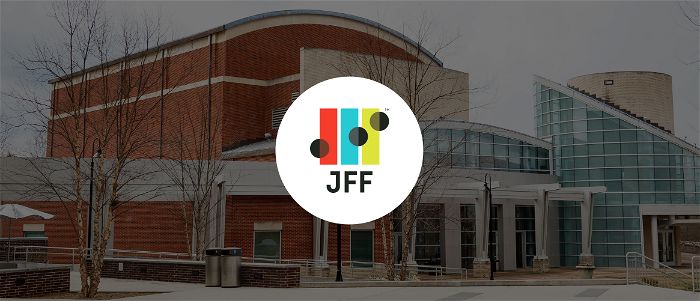
Let’s Seize This Moment to Reimagine K-12 Education for All
April 3, 2020
At a Glance
As parents and professional educators, we see systemic inequities in stark relief as we help our kids school-at-home during the COVID-19 crisis. We all must act now.
During almost every video conference we’ve been on over the past three weeks, one of us has had to abruptly step away from the screen to help our children with their new school-at-home routines. “Hang on a minute,” is the repeated apology. “I need to go manage a learning transition.” Like so many others in this era of sheltering in place, we’re each doing the best we can to project calm and deftly juggle our real-time responsibilities as parents and professionals during a global pandemic.
But the truth is we’re worried. As former teachers and leaders on the front lines of K-12 education who now lead innovative networks whose goal is to fix our nation’s inequitable systems, we’re personally and professionally troubled by what’s happening—and not happening—around us. Almost overnight, the future of learning and the future of work have arrived, and we see in stark detail just how woefully unprepared our educational systems are.
Almost overnight, the future of learning and the future of work have arrived, and we see in stark detail just how woefully unprepared our educational systems are.
Still, given the radical shifts we’re all making, the COVID-19 crisis could be the mechanism that finally compels us to boldly reimagine how teaching and learning might better leverage technology to provide engaging, equitable, excellent education to all young people across our country.
At this point, in our own families, and in the communities we serve nationwide, it’s clear that simply attempting to shift a long-broken in-person system to an online format does not serve students well. Indeed, it fuels inequality—predominantly along lines of race and class—by exacerbating preexisting gaps in educational access, quality, and capacity that result in corresponding gaps in educational, career, and life outcomes.
At our new home offices / home schools, we scramble every day to ensure that our children have some structure and learn something—with varied levels of support from their teachers—while also tending to their social and emotional needs and fitting in our own work around the edges. In the end, we’re just trying to maintain a semblance of normalcy amidst uncertainty and ensure they don’t lose momentum in their academic growth. It is a far cry from the type of deep and impactful learning experiences we hope for all children to have.
Our nation is ill equipped for this educational crisis. We do not have a clear and compelling vision for teaching and learning that take place outside of classrooms without in-person connections to educators. Our best-resourced teachers must learn new technologies immediately, so they can try to simulate their classrooms in virtual settings, despite very little experience, if any, in digital pedagogical skills. The rest of our teachers must make do with trying to communicate with students and their families via email, chat, text, or, if they’re fortunate, videoconference. Let’s face it: Few students are learning new content or advancing higher-order skills essential to college and career readiness.
Parents and family members, whether because they have the privilege of working from home, or are in the ranks of millions now unemployed, are similarly trying to navigate daily communication with teachers, understand expectations for learning, and manage their children’s educations—all against the backdrop of the world as we know it coming undone.
As “digital natives,” our students themselves are perhaps the best equipped for this shift to online and distance learning—but only those old enough, with the ability to manage their own work somewhat independently, and with access to the internet, computers, and other forms of technology. But as a colleague with a preschooler says in response to what her child’s school is now attempting to do, “Online instruction for a 4-year-old? That’s not a thing. This isn’t working.”
When we consider the difficult circumstances that many families are contending with—families without the internet bandwidth to connect to learning, families without devices for children to be able to engage online, families unable to provide educational guidance and support to their children, families without food on their tables, families without an adult home during the day, families with sick members, families facing unemployment and eviction, families fearful of deportation, families with loved ones in prison, families without a stable and healthy home for any reason—we know this educational crisis will be compounded for millions, and may even have intergenerational impact.
The future of education has arrived, and what we do today to step up to the challenge and the opportunity to radically redesign our K-12 and postsecondary education systems will establish the trajectory for social and economic outcomes for generations to come.
The potential devastation to our education and workforce development systems, and more broadly to our economy that this crisis will likely inflict—in addition to the tragic loss of life and the emotional and mental toll it will take on us all—is unimaginable. With 10 million people signing up for unemployment in just two weeks, we anticipate that life as we know it will be permanently changed.
The future of education has arrived, and what we do today to step up to the challenge and the opportunity to radically redesign our K-12 and postsecondary education systems will establish the trajectory for social and economic outcomes for generations to come. It is on us all, right now, to envision and actualize the future we want and need for our young people and for our communities. Let’s use this terrible disruption to take a cold, hard look at what isn’t working for our students and rebuild what we need our education systems to be.
If we were previously unable, or more likely unwilling, as a society to ask hard questions about equity and access in our educational system and its outcomes, we can no longer avert our gaze. The future can’t wait—it is here, now.
If we were previously unable, or more likely unwilling, as a society to ask hard questions about equity and access in our educational system and its outcomes, we can no longer avert our gaze. The future can’t wait—it is here, now.


